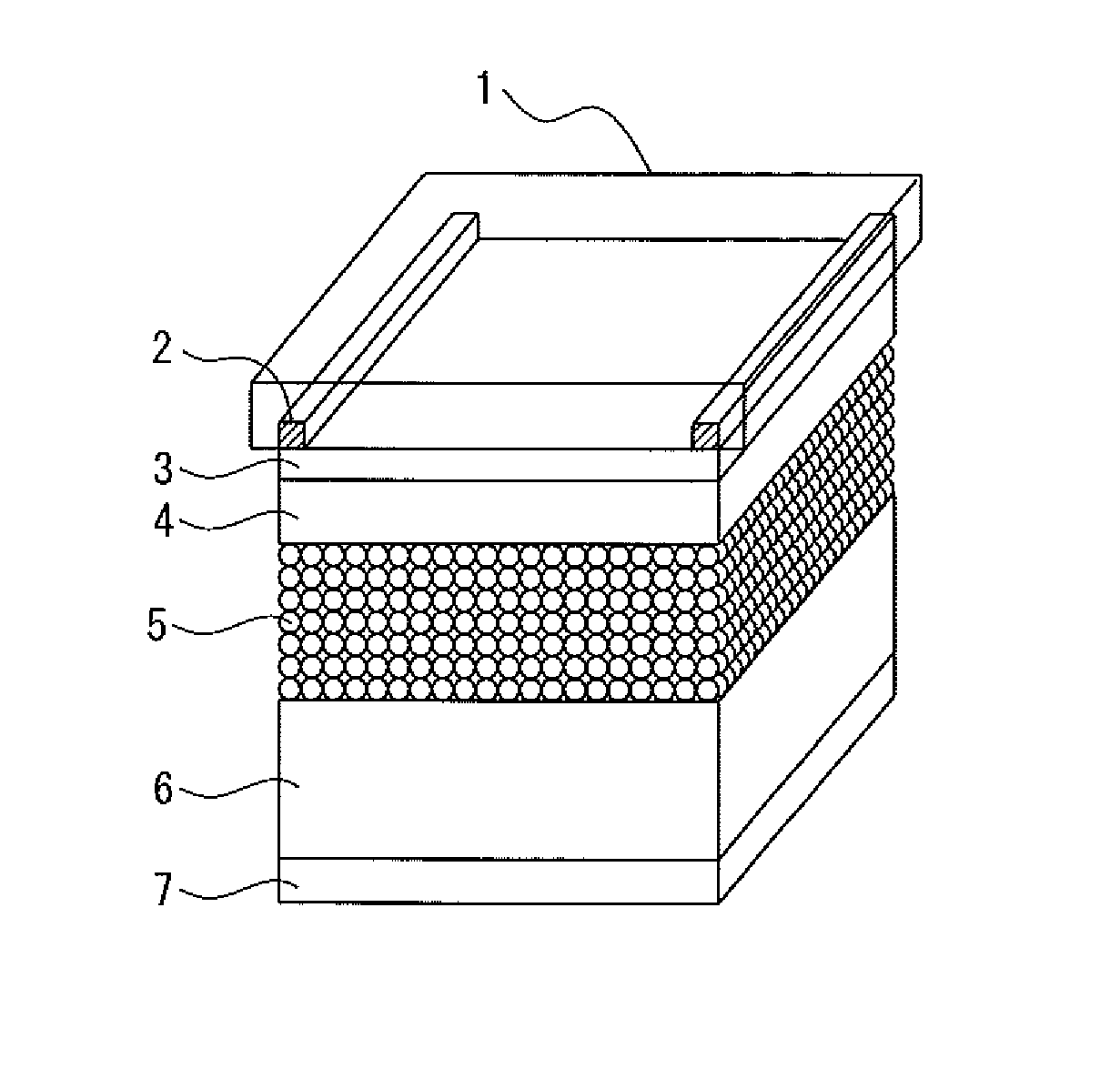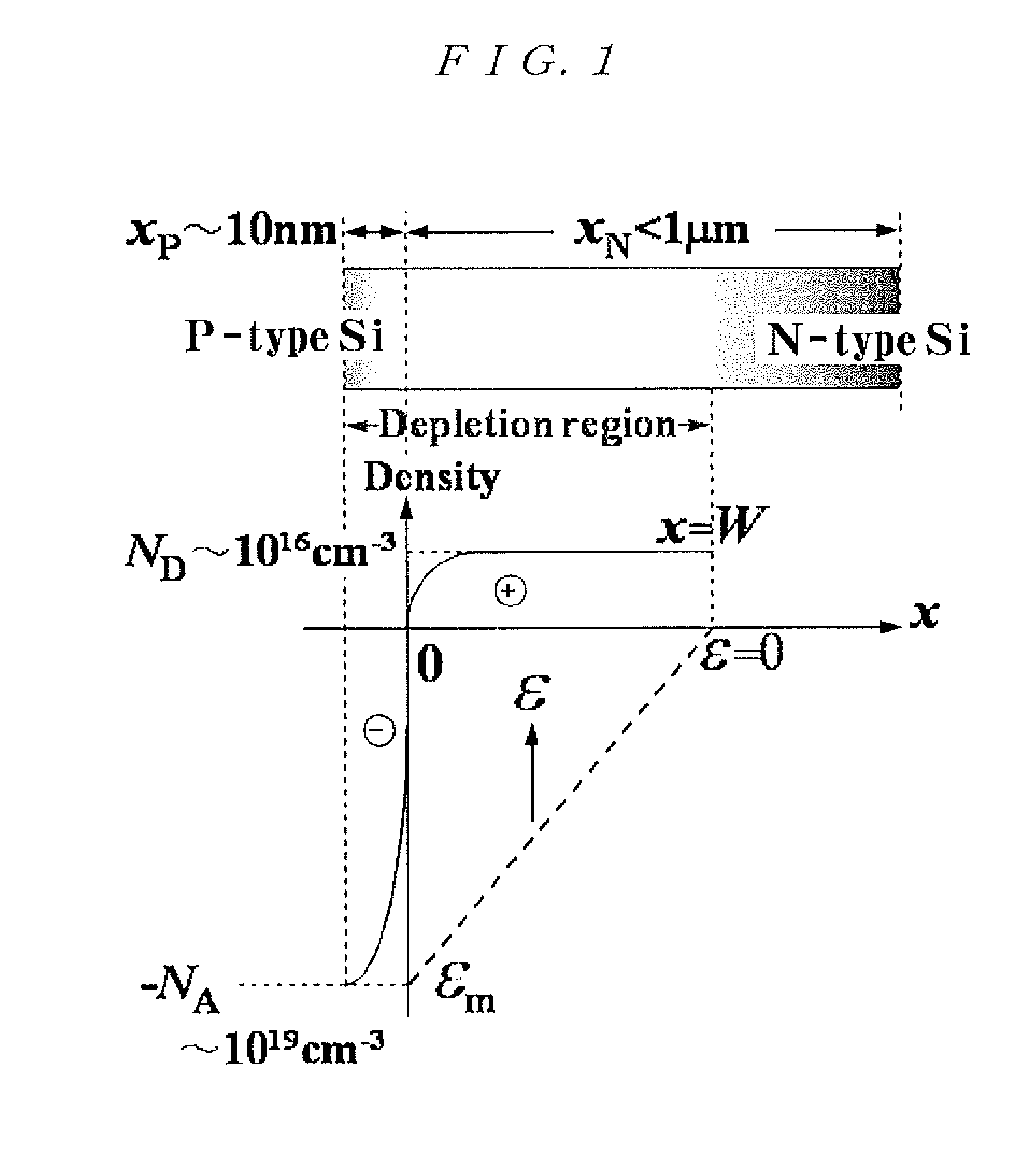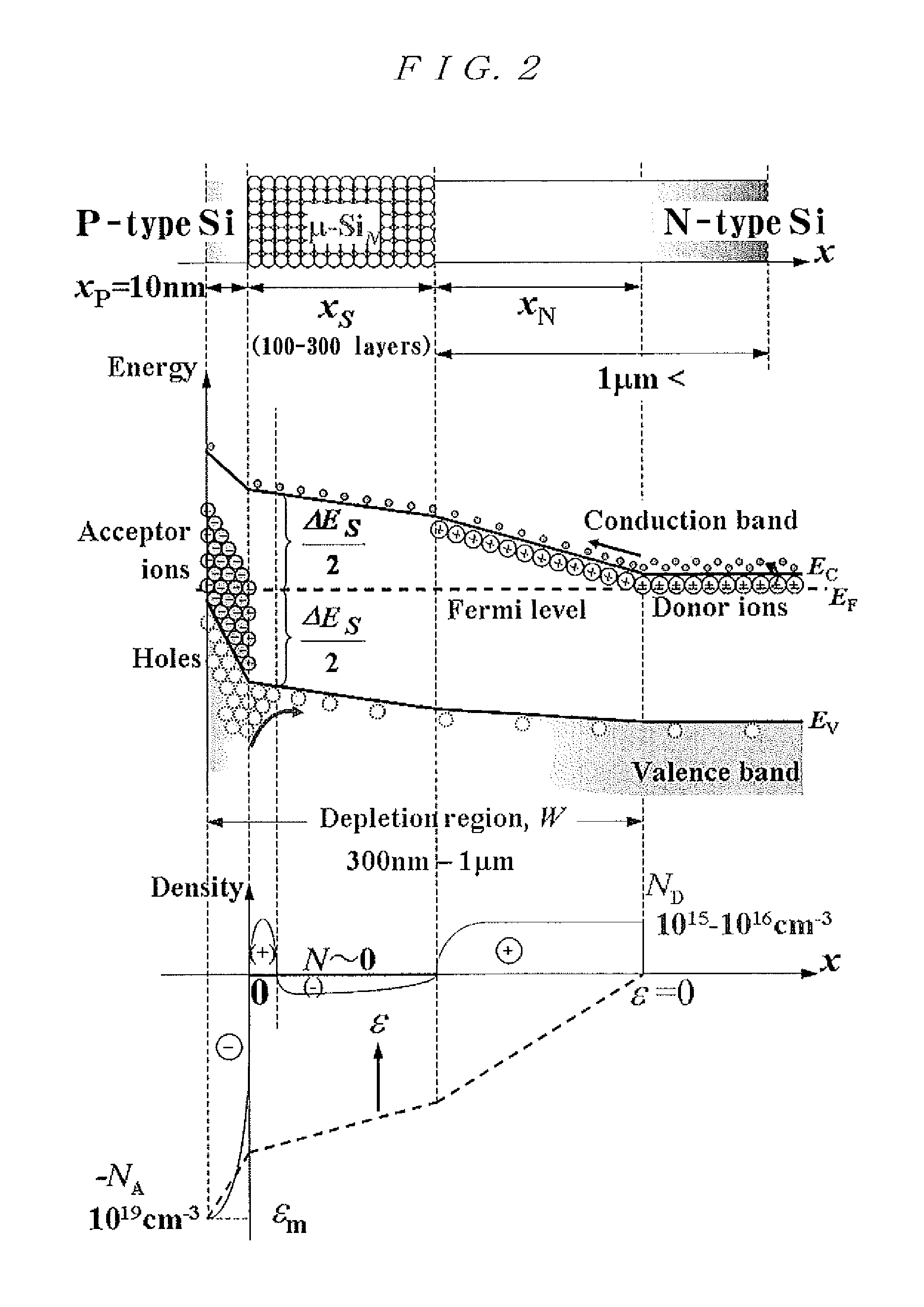Solar battery
a solar energy and battery technology, applied in the field of solar energy batteries, can solve the problems of low efficiency of methods, low efficiency of quantum dot layers, and waste of materials, and achieve the effects of reducing environmental load, high electromotive force, and excellent carrier conductivity
- Summary
- Abstract
- Description
- Claims
- Application Information
AI Technical Summary
Benefits of technology
Problems solved by technology
Method used
Image
Examples
first embodiment
[0055]The μ-SiN cluster thin film used in the P—SiN—N junction quantum dot solar battery according to the present invention shows a superior characteristic almost satisfying the conditions necessary for the silicon quantum dot layer to function as a solar battery, which are the problems to be solved by the present invention. The P—SiN—N junction-based device structure comprising the μ-SiN cluster thin film forms the basis of the silicon cluster solar battery of the present invention.
[0056]A manufacturing method of a silicon cluster solar battery will be described below in detail. The method includes the steps of: forming an electrode on a transparent substrate (step 1); forming an ITO transparent electrode (step 2); forming P-type microcrystalline silicon (step 3); forming silicon cluster (step 4); depositing N-type microcrystalline silicon (step 5); and forming a back Al earthed electrode (step 6).
[0057]As a glass substrate, ultra-precision machined high-grade glass (BDA / ABC, Nippo...
second embodiment
[0076]The second embodiment shows an example where a P—SiN—N junction utilizing graphene, as a promising passivation material for the junction interface of a silicon cluster solar battery, is included in a device design.
[0077]The production method of a silicon cluster solar battery according to the second embodiment will be explained below.
[0078]The steps of the second embodiment are the same as those of the first embodiment except that a passivation-film (graphene) deposition step is provided between the step (step 3) of depositing the P-type microcrystalline silicon and the step (step 4) of forming silicon clusters, which are the steps according to the first embodiment.
[0079]The passivation film (graphene) is formed by: producing a dispersion solution in which graphene refined from graphite by way of chemexfoliation is dispersed in methanol or in anhydrous propanol; and dropping the graphene dispersion solution on the substrate surface on which the P-type microcrystalline silicon ...
PUM
| Property | Measurement | Unit |
|---|---|---|
| particle diameter | aaaaa | aaaaa |
| distance | aaaaa | aaaaa |
| thickness | aaaaa | aaaaa |
Abstract
Description
Claims
Application Information
 Login to View More
Login to View More - R&D
- Intellectual Property
- Life Sciences
- Materials
- Tech Scout
- Unparalleled Data Quality
- Higher Quality Content
- 60% Fewer Hallucinations
Browse by: Latest US Patents, China's latest patents, Technical Efficacy Thesaurus, Application Domain, Technology Topic, Popular Technical Reports.
© 2025 PatSnap. All rights reserved.Legal|Privacy policy|Modern Slavery Act Transparency Statement|Sitemap|About US| Contact US: help@patsnap.com



